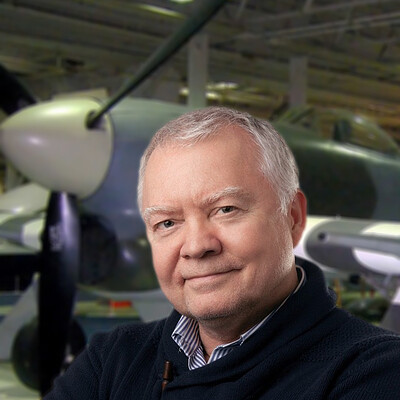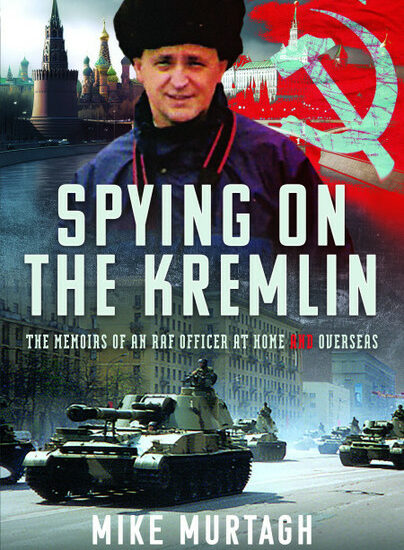Author Guest Post: Marc Audrit
It only took Jean de Selys Longchamps ten seconds to earn his place in eternity: on January 20, 1943, piloting his Typhoon just above the rooftops of Brussels, he strafed the Avenue Louise headquarters of the Sipo-SD, the German Security Police, causing an unprecedented wave of enthusiasm among the occupied Belgian population. A legend was born.
Eighty years later, this work finally sheds rigorous and fascinating light on one of the most epic destinies of the Second World War. Relying on the collections of the de Selys Longchamps family, previously unpublished archives, the testimonies of former pilots and relatives, as well as an extensive bibliography, Marc Audrit signs the very first biography dedicated to the man his teammates respectfully nicknamed “the baron.”
Meet the author with this short interview.

Can you summarize in a few words what Jean de Selys Longchamps’s feat was?
On January 20, 1943, at the controls of his Typhoon, Jean de Selys, who had never before flown over Brussels (he was part of a cavalry regiment before the war), skimmed low over the rooftops of the city to strafe without fail the most dreaded place in the capital: the Gestapo headquarters on Avenue Louise. His raid was a bold move executed with incredible skill: none of his shells hit any other facade!
Why did the raid he committed 80 years ago boost the morale of the Belgians, particularly those in Brussels?
In January 1943, the morale of the Belgians was clearly low as the German occupation had significantly hardened throughout 1942. Arrests and executions of hostages increased, as did the round-ups of Jews and their deportation to death camps… A thick black veil had fallen over the entire country. Jean de Selys’s daring feat came just in time, humiliating the Germans in everyone’s eyes and striking a very powerful symbol. What we would call today a “buzz” spread like wildfire throughout Brussels in a single day and across the country in less than a week.
In your view, did Jean de Selys Longchamps meet all the criteria of a true “knight of the skies”?
Yes and no, actually. He clearly had the vision and courage. He was a remarkable pilot, there is no doubt (his superiors said so). But the biography I dedicate to him is anything but hagiographic: Jean de Selys had a complex personality, he was a rebel in many ways, and clearly an individualist. He had a strong character and a polarizing profile that did not please everyone. I think we too often idealize “knights of the skies” as valiant and noble warriors who made the sky their kingdom. It’s much more nuanced with Jean de Selys!
You say that the investigative work done to write your book was fascinating. Why?
Because the amount of quality and reliable information was extremely low. There is a lot on de Selys, including on the internet, but the vast majority of what is available is wrong to varying degrees. It thus required a real investigative effort to manage to paint a well-documented portrait from his birth to his death. I think it’s impossible to understand Jean de Selys if you don’t take the time to look at what happened BEFORE and AFTER his famous raid. Access to the archives kept by the de Selys family was crucial for feeding my work with a number of unpublished documents.
You express a real motivation, even a duty of transmission. You say that we are the insolvent heirs of yesterday’s heroes. Do you think that our society today does not do enough to maintain the memory of those who sacrificed for our freedoms?
Clearly! We live in a civilization with an attention span akin to that of a goldfish: 8 seconds. The battle for attention is fierce and one “novelty” chases another in less time than it takes to say it. In this context, the events of the past are in great danger of disappearing as direct witnesses pass away one after the other. It is regrettable because if we are not careful, the memory of those who fought for our freedom will disappear.
At the end of this extensive research work that you are publishing today, do you think Jean de Selys was a daring man who pulled off a thunderous feat, or was he a fighter who had carefully prepared his attack to give himself every chance of success?
Definitely a bit of both. To embark on such a raid, without official authorization, requires a good dose of nerve and audacity, for sure. But de Selys was a seasoned pilot: he knew his target well (he had visited a friend who lived in the building before the war) and he knew he would have an ideal line of fire by entering via Avenue De Mot. His slalom over Brussels was perfectly planned with strong visual landmarks (Palace of Justice, Cinquantenaire, plains of maneuvers…) and for a few months his squadron had successfully specialized in low-altitude air-to-ground attacks. Jean de Selys clearly knew what he was engaging in and rightly believed he had every chance of successfully carrying out a mission he had been preparing for weeks.
If life had given you the opportunity to meet Jean de Selys Longchamps, what would you have liked to say to him?
“Hello Jean, would you have a dozen hours to spare for me? I have so many questions to ask you…”. More seriously, it’s difficult to isolate one question. I think I would like him to tell me about the 30 days before his raid and the 30 days that follow. There is still so much to understand.

Order your copy here.

